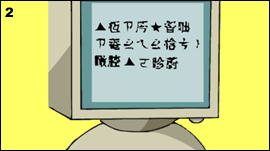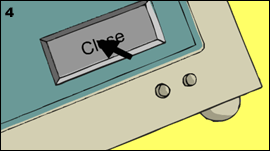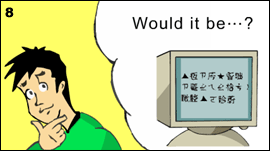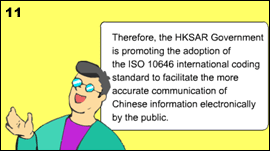What is the ISO/IEC 10646?
To provide a common technical basis for the processing of electronic information in various languages, the International Organization for Standardization (ISO) has developed an international coding standard called ISO/IEC 10646. The ISO/IEC 10646 provides a unified standard for the coding of characters in all major languages in the world including traditional and simplified Chinese characters.
 Different characters are used in different languages. To allow for the processing of local characters in computers and electronic devices, different character coding standards are used in different parts of the world. For example, the ISO/IEC 10646 and Big-5 coding standard are both used in Hong Kong and the ISO/IEC 10646 is being actively promoted. The GB (Guo Biao) coding standard is used in Chinese Mainland. The CNS Code is Taiwan, China's coding standard while Big-5 coding is also commonly used. However, different coding standards are not compatible with each other. The same internal code may represent different characters in different coding standards. As a result, electronic information sent from one part of the world may become mis-coded or incorrectly displayed when the electronic information is received by the computer systems in other parts of the world. Extra time and effort is required to perform code conversion between different coding standards. However, code conversion might still not solve the problem completely.
Different characters are used in different languages. To allow for the processing of local characters in computers and electronic devices, different character coding standards are used in different parts of the world. For example, the ISO/IEC 10646 and Big-5 coding standard are both used in Hong Kong and the ISO/IEC 10646 is being actively promoted. The GB (Guo Biao) coding standard is used in Chinese Mainland. The CNS Code is Taiwan, China's coding standard while Big-5 coding is also commonly used. However, different coding standards are not compatible with each other. The same internal code may represent different characters in different coding standards. As a result, electronic information sent from one part of the world may become mis-coded or incorrectly displayed when the electronic information is received by the computer systems in other parts of the world. Extra time and effort is required to perform code conversion between different coding standards. However, code conversion might still not solve the problem completely.
The development of the ISO/IEC 10646 is aimed at solving the above problems. It covers characters in all major languages in the world, including traditional and simplified Chinese characters. The ISO/IEC 10646 provides a unified character coding standard for the communication and exchange of electronic information. By adopting the ISO/IEC 10646, various computer systems in different parts of the world will be able to more accurately store, process, transmit and display electronic information in different languages, thus facilitating the flow of electronic information and the conduct of electronic transactions across geographical areas.
Introductory Story on the ISO/IEC 10646
If you can't view the Animated Version in this page, you can .
Development of the ISO/IEC 10646
The ISO released the first version of the ISO/IEC 10646 in 1993. It was called ISO/IEC 10646-1:1993. In 2000, the ISO released ISO/IEC 10646-1:2000, which is an updated version of ISO/IEC 10646-1:1993. ISO/IEC 10646-1:2000 contains 27,484 ideographic characters consisting of the 20,902 ideographic characters of ISO/IEC 10646-1:1993 plus 6,582 newly defined ideographic characters in the CJK Unified Ideographs Extension A block. In November 2001, the ISO released ISO/IEC 10646-2:2001 as a supplement to ISO/IEC 10646-1:2000. ISO/IEC 10646-2:2001 contains 42,711 newly defined ideographic characters in the CJK Unified Ideographs Extension B block, bringing the total number of ideographic characters contained in the ISO/IEC 10646 to exceed 70,000. All the characters in the Kangxi Dictionary, Hanyu Dazidian and Hanyu Dacidian are now included in the ISO/IEC 10646. In April 2004, ISO published the ISO/IEC 10646:2003, which is a single publication as the result of the merger of the previous two releases of ISO/IEC 10646: ISO/IEC 10646-1:2000 and its supplement ISO/IEC 10646-2:2001. Therefore, the ideographic characters in the ISO/IEC 10646:2003 are the same as those in ISO/IEC 10646-1:2000 cum ISO/IEC 10646-2:2001. In December 2008, ISO published the CJK Unified Ideographs Extension C block in ISO/IEC 10646:2003/Amd 5. The CJK Unified Ideographs Extension C block contains 4,149 additional ideographic characters. In October 2009, ISO published the ISO/IEC 10646:2003/Amd 6. In March 2011, ISO published the ISO/IEC 10646:2011, which is a single publication as the result of the merger of the previous releases of ISO/IEC 10646:2003 and its Amendments 1 through 7. ISO/IEC 10646:2011 contains 222 ideographic characters in the CJK Unified Ideographs Extension D block, in addition to the CJK Unified Ideographs block, CJK Unified Ideographs Extension A block, CJK Unified Ideographs Extension B block, and CJK Unified Ideographs Extension C block which contain 20,940, 6,582, 42,711, and 4,149 characters respectively. In September 2014, ISO published the ISO/IEC 10646:2014, which includes 5,762 ideographic characters in the CJK Unified Ideographs Extension E block. In December 2017, ISO published the ISO/IEC 10646:2017, which includes 7,473 ideographic characters in the CJK Unified Ideographs Extension F block. In December 2020, ISO published the ISO/IEC 10646:2020, which includes 4,939 ideographic characters in the CJK Unified Ideographs Extension G block.
In November 2005, ISO released the ISO/IEC 10646:2003/Amd 1:2005. This release publishes a subset of ideographic characters, named as International Ideographs Core(IICORE).
Ideographic characters refer to those characters with appearance related to the meaning of the characters, such as the Han characters. Inclusion of ideographic characters into the ISO/IEC 10646 is carried out in a few phases: i.e. CJK Unified Ideographs Extension A-G blocks.
For standardisation purposes, some ISO documents (including the ISO/IEC 10646 and its amendments) are made freely https://standards.iso.org/ittf/PubliclyAvailableStandards/.
The development of the ISO/IEC 10646 and the Unicode is kept synchronised by the ISO and the Unicode Consortium. Information on the characters included in the ISO/IEC 10646 / the Unicode is available on the web site of the Unicode Consortium at https://www.unicode.org/.
Brief Introduction of ISO/IEC 10646 Development
ISO/IEC 10646 Development process involves the following stages:
| Proposal Stage | Committee Stage | Enquiry Stage | Approval Stage | Publication Stage |
|---|---|---|---|---|
| Committee Draft(CD) | Draft International Standard(DIS) | Final Draft International Standard(FDIS) | International Standard | |
| When a working draft is sufficiently solid and the working group is satisfied that it has developed the best technical solution to the problem being addressed, it becomes committee draft (CD) | The DIS is submitted to National Bodies for voting and comment | ISO will hold a ballot with National Bodies | The final text will be published as the International Standard |
For details, please visit the following website:
https://www.iso.org/iso/home/standards_development.htm
For the latest development of ISO/IEC 10646, please visit the following website:
https://www.iso.org/iso/search.htm?qt=10646&searchSubmit=Search&sort=rel&type=simple&published=on
These International Standards are publicly available for Standardization purposes:
https://standards.iso.org/ittf/PubliclyAvailableStandards/index.html










